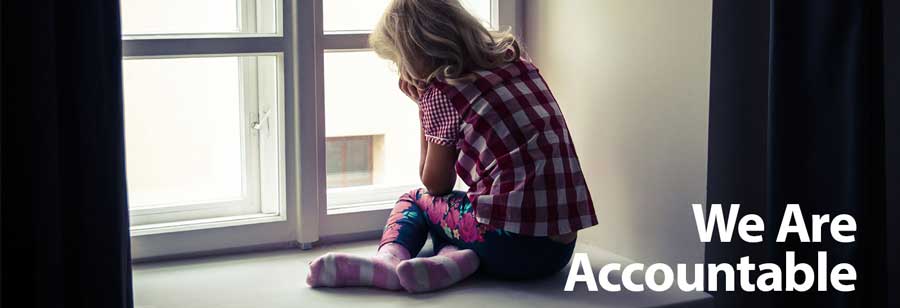Priscilla was her name. A beautiful, young girl who everyone thought odd because she would hide under layers and layers of clothing. She wore three pairs of socks, two pairs of jeans, three t-shirts, two jackets, sunglasses, and a baseball cap. She was an outcast. It was like she had something to hide or something to hide from. Even the other kids in school didn’t want to be around her.
She never spoke in class and she never sat with anyone at lunch. No one ever saw her parents pick her up. She always walked everywhere. A few times, I tried to inquire about her situation but she never acknowledged my presence. If only I knew how to talk to her, how to help her, even how to protect her.*
Children–God’s Gift to Us
Jesus said, “Let the children come to me. Don’t stop them! For the Kingdom of God belongs to those who are like these children” (Luke 18:15-17 NLT). This Bible text makes it clear that children are seen as gifts from God entrusted to parents, with communal participation in their lives. This community responsibility is not only in educating children, but also in providing a safe place for them to be. Unfortunately, unlocked doors and utopian retreats can furnish churches with the perfect cover for breaching the trust of an innocent child. The Seventh-day Adventist Church and its members must be vigilant in their effort to minimize risk and educate everyone on the signs of abuse.Child abuse is often a patterned behavior that takes place over a period of time. The longer the abuse is perpetuated, the more severe the injury. Abuse can occur in varying ways, yet each avenue possesses similar warning signs. According to the U.S. Department of Health and Human Services, the four categories of abuse are:
- Physical
- Psychological
- Sexual
- Neglect
How To Talk With, Help, and Protect Our Children
- Talking with our children: Create an environment where children will feel comfortable approaching an adult about any kind of abuse. Take time to talk with them about appropriate and inappropriate touch. Help them learn the answers to these questions.
- Where are your personal zones?
- What is the difference between safe touch and unsafe touch?
- What should you do if someone touches you in your personal zones?
- Helping our children: Even after all our efforts, child abuse may still occur at your local church or school. How can we help our children once the abuse has occurred? Linda Koh, director of the Department of Children’s Ministries at the General Conference of Seventh-day Adventists says: “We need to report the incident to the appropriate authorities and agencies. If the abuse involves a church member inform the pastor and, of course, the parents. Many times in church we think ‘Oh we shouldn’t say anything. Don’t report it.’ We must report any abuse incident so we can protect the children, whether you are a member or not. If I don’t take care of the children who are under the church’s care, I am accountable too."
- Protecting our children: After talking with children and helping those who have suffered abuse, it’s important to also put measures in place in order to prevent abuse from occurring again. The Seventh-day Adventist Church Manual lists several policies on pages 168 and169 that provide a measure of safety for children and efficient screening of volunteers. Such policies should include:
- Two-Adult Policy - Having two adults present in children’s classrooms or during activities.
- Open Door – Discourage private or one-on-one contact and encourage an open-door policy in all situations. Where an open door is not possible, station a second adult at the door.
- Volunteer Screening - Have all volunteers complete a volunteer information form, check their references, and, if required by law, do a background check.
- Six-Month Policy - Require a waiting period of six months for newly baptized or transferring members who have indicated a willingness to work with children.
- Training - Provide regular training for teachers and volunteers to help them understand and protect children during activities.
- Local Legal Requirements – Local church leaders should consult with the conference to learn conference procedures and requirements, including local legal requirements for individuals working with children.
Using the tips outlined in the steps above we, as church, can talk with, help and protect children like Priscilla and make our church a safer place for children to be. For more information, visit Adventist Risk Management, Inc.’s Child and Youth Activities page.

